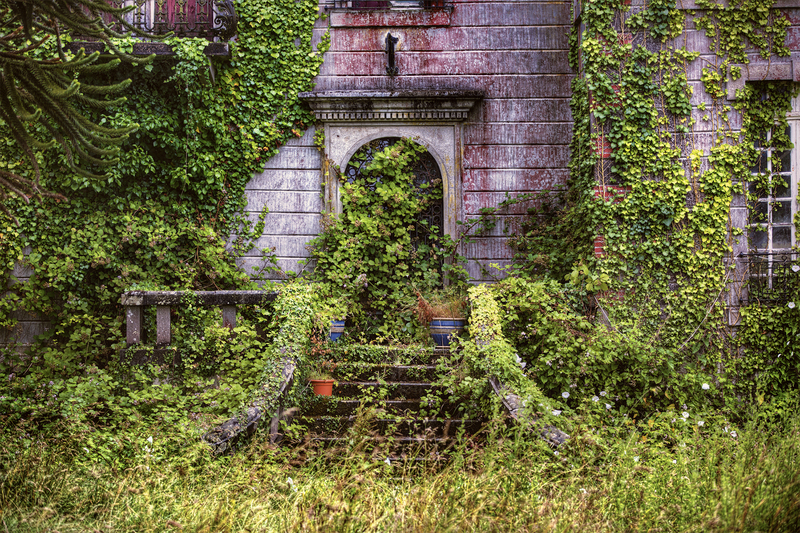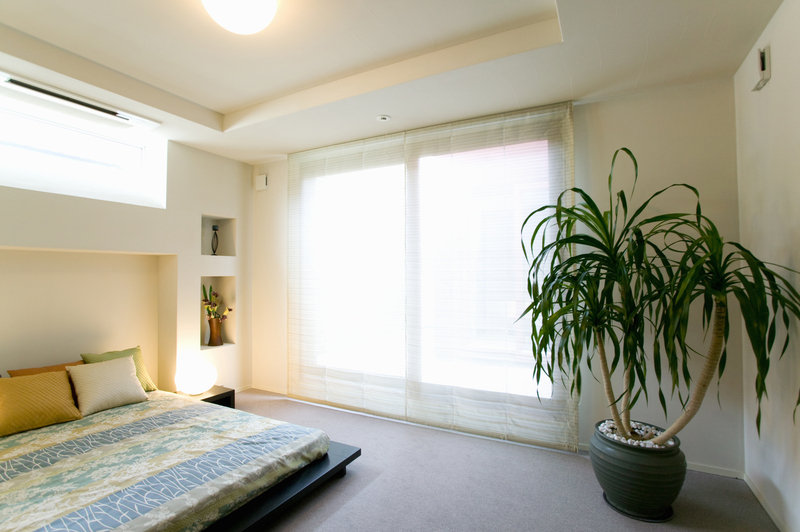Sculpting a Sanctuary for Pets and Plants
Posted on 15/09/2025
Introduction: Creating Harmony Between Pets and Plants
In a world where our homes are our sanctuaries, the desire to nurture both pets and plants is only natural. Combining greenery with animal companionship can be immensely rewarding, but it does come with its own set of challenges. Sculpting a sanctuary for pets and plants is about crafting a balanced living space--one that is safe, beautiful, and nurturing for all its inhabitants. This comprehensive guide explores thoughtful solutions, practical designs, and expert tips to help you fuse the best of both worlds in your home.

Why Create a Pet and Plant Sanctuary?
Integrating plants and pets in your living area is more than just an aesthetic choice. For pet owners and plant lovers alike, it offers a myriad of emotional and physical benefits. Here's why you should consider designing a sanctuary that caters to both:
- Healthier Living Spaces: Plants purify air and enhance well-being, while pets provide companionship, reduce stress, and encourage activity.
- Enhanced Connection to Nature: A home filled with lush greens and happy pets fosters a sense of calm and connection to the natural world.
- Educational Opportunities: Sharing a space with pets and plants teaches responsibility, empathy, and respect for living things.
- Unique Personalization: Every sanctuary is a reflection of its caretaker's style, creativity, and priorities.
Choosing the Right Plants for Pet-Friendly Spaces
Selecting the perfect greenery is the cornerstone of sculpting a sanctuary for pets and plants at home. Not all plants are safe for pets--some are toxic and can cause serious health issues if ingested. To ensure you're creating a safe environment, consider these important steps:
Identify Pet-Safe Plants
- Spider Plant (Chlorophytum comosum): Non-toxic for cats and dogs and easy to care for.
- Areca Palm: Provides a tropical feel and is harmless to pets.
- Boston Fern: Safe and adds lush texture to indoor spaces.
- Bamboo Palm: A tall, graceful plant that's non-toxic to animals.
- Calathea: Vibrant foliage and safe for both dogs and cats.
Avoid the following common toxic plants:
- Sago Palm
- Lilies (especially dangerous for cats)
- Dieffenbachia (Dumb Cane)
- Philodendron
- Aloe Vera
Whenever you're in doubt, consult the ASPCA's list of toxic and non-toxic plants or speak to your veterinarian.
Designing Your Sanctuary: Key Considerations
Building a harmonious environment for both pets and plants requires thoughtful design. Here are core principles to guide you:
1. Prioritize Safety
- Sturdy Plant Holders: Use heavy, tip-resistant pots to prevent curious animals from knocking them over.
- Covered Soil: Place decorative stones or mesh over soil surface to deter digging or chewing.
- Hanging Solutions: Utilize shelves, macrame hangers, and wall-mounted planters to keep delicate or dangerous plants out of reach.
2. Maximize Natural Light
Both pets and houseplants thrive with access to sunlight. Organize your space to optimize windows, using plant stands or cat perches so everyone can benefit from natural rays. Consider how sunlight shifts during the day and adapt your placement accordingly.
3. Balance Accessibility
- For Pets: Set up cozy nooks, beds near windows, and clear pathways for movement.
- For Plants: Opt for varying heights and clusters to mimic natural ecosystems and add visual interest.
4. Foster Enrichment and Engagement
- Catios & Cat Shelves: If you have cats, install "catios" (enclosed patios) or climbing shelves interwoven with pet-safe greenery.
- Interactive Spaces: Include scratching posts, bird-watching stations, or water features that appeal to both pets and their humans.
Incorporating Plants into Your Pet's World
When creating a sanctuary for pets and plants, blend the two deliberately rather than treating them as separate entities. Here's how:
Use Plants for Enrichment
- Cat Grass: Grow wheatgrass or oat grass in shallow trays for your feline friends to nibble.
- Herb Gardens: Cultivate pet-safe herbs such as parsley, basil, or mint for scent and taste stimulation.
- Pet-Safe Lawns: For dogs, create lush patches of pet-friendly grass indoors for them to lounge or play on.
Create Inviting Green Spaces
- Window Gardens: Place feathery ferns or trailing pothos on sills, creating a green backdrop for perching pets.
- Indoor Dog Parks: Allocate a corner with astro-turf, sturdy plants, and obstacles for play and comfort.
- Miniature Terrariums: Build enclosed plant displays to protect delicate species from nibbling or pawing.
Solving Common Challenges: Pets vs. Plants
Sharing a sanctuary with both pets and plants can be tricky. Here are some frequent issues and actionable solutions to keep your habitat thriving:
Issue 1: Pets Chewing or Digging in Plants
- Place citrus peels in soil--many pets dislike the scent.
- Use natural deterrent sprays (ensure they are safe for pets and plants).
- Train and reward positive behavior; offer alternative chew toys.
Issue 2: Soil Spills
- Elevate pots on shelves or use hanging baskets.
- Cover soil with smooth pebbles or mesh.
- Opt for self-watering pots that minimize exposed soil.
Issue 3: Allergies and Asthma
- Choose plants known for air purification, like snake plants or peace lilies (note peace lily toxicity for cats and dogs).
- Maintain regular plant and pet grooming routines to reduce fluff, pollen, and dander.
- Use HEPA air filters to further purify the air.
Outdoor Sanctuaries: Gardens for Pets and Plants
If you're fortunate enough to have outdoor space, expand your sanctuary to the garden or balcony. Outdoor sanctuaries require special considerations to keep your pets and plants healthy and secure.
Safe Landscaping for Pets
- Choose sturdy, non-toxic ground cover such as clover or buffalo grass.
- Build raised beds or use fencing to protect vegetable and flower gardens from digging.
- Ensure there's ample shade, fresh water, and escape-proof boundaries.
- Install pet-friendly landscaping elements, like tunnels, sand pits, or shallow water features.
- Avoid chemical pesticides and consider natural pest control methods.
Balcony Gardens for Urban Dwellers
- Use planters and vertical gardens to maximize space.
- Create shaded relaxation zones with sun sails or umbrellas.
- Install mesh or balcony netting to prevent falls.
Pet Care Versus Plant Care: Finding the Balance
Both plants and pets have unique daily needs. Finding balance is key to maintaining a thriving home sanctuary.
Pet Care Essentials
- Consistent feeding and hydration routines.
- Frequent pet-safe cleaning to remove fur, dander, and tracks.
- Ample exercise, play, and affection.
Plant Care Essentials
- Regular watering, pruning, and light checking.
- Inspect for pests regularly; separate infested plants from pets.
- Adjust placements seasonally for optimal sunshine and temperature.
Tip: Create a daily or weekly calendar to manage both plant and pet care tasks for stress-free maintenance.
DIY Projects for a Pet-and-Plant Oasis
Elevate your pet and plant-friendly sanctuary with creative do-it-yourself projects. Here are some ideas for all skill levels:
- Hanging Cat Jungle: Mount wood shelves staggered vertically on a wall, blending pet-safe ferns between levels for an interactive green playground.
- Dog-Friendly Planter Boxes: Build sturdy raised planters to hold herbs and flowers, with a built-in dog bench for lounging beneath.
- Terrarium Tables: Repurpose glass-top tables with enclosed plantings safe from curious noses and paws, creating living decor.
- Pet Grass Trays: Inexpensive seedling trays filled with oat or wheat grass satisfy nibbling instincts and add greenery.
Expert Advice: Sustainability and Wellness
A true sanctuary prioritizes sustainability. Consider these extra measures to support the well-being of pets, plants, and the planet:
- Utilize organic soils and fertilizers to minimize chemical risks to pets.
- Collect rainwater for watering plants to save resources.
- Install low-energy lighting for both plant growth and pet comfort.
- Recycle old containers or build planters from upcycled wood and materials.

Conclusion: The Joy of Living with Pets and Plants
Sculpting a sanctuary for pets and plants is an act of love, intention, and creativity. With mindful plant choices, strategic layouts, and a dash of imagination, you can transform any space into a safe, flourishing retreat for all living things under your roof. By blending the energy of animals and the tranquility of greenery, your home becomes more than just a place--it blossoms into a living ecosystem teeming with joy, health, and harmony.
Whether your sanctuary is a sunlit window, a lush garden, or even a collection of terrariums perched above a snoozing cat, remember: the best pet-plant sanctuaries are those sculpted with care and curiosity. Start small, adapt often, and watch your home come alive--one pawprint and one leaf at a time.
Frequently Asked Questions: Pets and Plant-Friendly Sanctuaries
- What plants are absolutely safe for both cats and dogs?
Spider plant, Boston fern, areca palm, bamboo palm, and certain herbs like parsley and basil are all generally pet-safe. - How can I prevent my dog from digging up my potted plants?
Cover soil, offer alternate digging areas, and use sturdy, heavier pots. Training and positive reinforcement can also help. - Are there ways to create a green sanctuary in a small apartment?
Yes, use vertical gardening, wall-mounted shelves, and hanging plants to maximize space while keeping plants safe from pets. - Can pets benefit from having plants in their environment?
Absolutely. Plants can reduce stress, offer enrichment, and keep air cleaner for both you and your pets, as long as you choose non-toxic varieties.
Transform your home into a thriving, green, and pet-friendly space. Begin sculpting your sanctuary for pets and plants today, and experience the rewards of living in harmony with nature and your animal companions.

